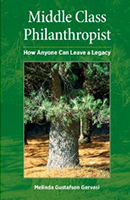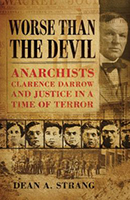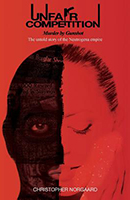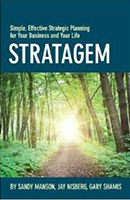 VERDICT: It’s a Keeper
VERDICT: It’s a Keeper
Ripples in Opperman’s Pond
By Doug Zipes (iUniverse, 2013). 288 pgs. $16.16. Order, www.amazon.com.
Reviewed by Dustin Woehl
This is the story of Job – if Job were a cursed cardiologist genuflecting to the god of good medicine.
While his identical twin brother, Dorian, elder by mere minutes, leads a charmed life running the family pharmaceutical company and “bunny-baiting,” cardiologist Daniel Sloane struggles to practice medicine. Daniel’s tribulations are not the result of any lack of intelligence, skill, or effort. He is, in fact, a renowned cardiologist. His troubles, rather, come from without. It might be the curse of the second-born, or it might be the ripples from a coin tossed on Opperman’s Pond. Whatever it is, Daniel is cursed – figuratively and maybe literally.
This thriller starts off a little roughly as we meet Daniel while he is volunteering in an African country. While there, Daniel quickly saves lives, loses lives, and meets the love of his life. The action, which never slows, starts before we learn much about who Daniel is. Some suspension of disbelief therefore is required, but this early investment pays dividends as, amid all the action, we get to know Daniel well. All Daniel wants to do is help people by practicing medicine, but life has other plans for him. Fascinating plans.
Want to Review a Book?
Please request a book and writing guidelines from Wisconsin Lawyer managing editor Karlé Lester, at klester@wisbar.org or (608) 250-6127. Reviewers may keep the book reviewed. Reviews of about 500 words are due within 45 days of receiving the book. Reviews are published, space permitting, in the order received and may be edited for length and clarity.
Daniel returns to Indiana, and we learn that Dorian has just taken over the family pharmaceutical company after the death of the brothers’ domineering father. Having escaped from his father’s shadow, Dorian bets the slumping company on a promising pain drug he is developing with the help of a renegade Russian scientist. The brothers’ fates intertwine when the star of the Indiana Pacers gets injured in a game and Daniel helps him obtain access to this miracle drug, which is still being tested.
The rest of the book finds Daniel tested to his limits. Without giving away any of the multiple plot twists, all of which held me riveted, I can mention that Daniel’s trials and tribulations include final exams, suspicious deaths, attempted murders, a zombie, a taser, an escort, an angry mob, death threats, blackmail, computer hacking, good vodka, Tolstoy’s War and Peace, and, scariest of all – civil litigation. Ripples in Opperman’s Pond is action-packed and perfectly paced.
The plot twists, although containing all of the above and more, are actually perfectly plausible in the context of the story, and the protagonist is surprisingly relatable. Throughout these adventures, Daniel demonstrates very little by way of conventional heroics. More often, he acts as most of us would in the same situation. Blunders abound. Despite that, or maybe because of it, I couldn’t put down this thriller about a heart rhythm specialist. It kept me turning pages to see whether Daniel’s heart would win out against the odds.
Dustin T. Woehl, Univ. of Pennsylvania 2000, is in practice with Kasdorf, Lewis & Swietlik S.C., Milwaukee.
 VERDICT: It’s a Keeper
VERDICT: It’s a Keeper
Middle Class Philanthropist: How Anyone Can Leave a Legacy
By Melinda Gustafson Gervasi (Madison, WI: Purple Owl Press, 2013). 82 pgs. $13.16. Order, www.barnesandnoble.com.
Reviewed by Jill Mueller
Anyone who has volunteered for a charity, donated to a charity, or thought about doing one or both of these things could benefit from reading the incredibly short Middle Class Philanthropist: How Anyone Can Leave a Legacy.
Estate-planning lawyer Melinda Gustafson Gervasi is writing to the masses in her easy-to-read guidebook. This book is in no way intended for legal minds but rather for anyone with a savings account or small asset and a gold heart. The author takes a very positive and noncontroversial opinion – everyone can donate to a charity upon death – and spells out the basic ways of how to go about doing so.
Gustafson Gervasi discusses ways to identify a charity worth donating to, things other than cash to donate, and legal ways to make the donation have a lasting impact. She also is careful to point out the need to consult with an attorney and a financial planner when planning for death and donation.
In an attempt to motivate readers, the author sprinkles the book with short stories about individuals who made modest donations to charities that ended up having monumental
effects on those organizations. The stories are sweet but not
all that inspiring.
If you are already a charity-minded person, pick this book up anytime to reinforce your beliefs and learn some helpful tips. If you are an individual who has never considered volunteering for or donating to a charity, go out and volunteer for one, be active in that charity, and help others. Get inspired by doing, and then come home and read this slender book to start putting the donating-upon-death wheels in motion.
Lastly, consult an estate-planning attorney.
Jill E. Mueller, Marquette 2013, is an associate attorney at MacGillis Wiemer LLC, Wauwatosa, practicing family law.
 VERDICT: Touchdown!
VERDICT: Touchdown!
Worse Than the Devil: Anarchists, Clarence Darrow and Justice in a Time of Terror
By Dean A. Strang (Madison, WI: University of Wisconsin Press, 2013). 268 pgs. $26.95. Order, www.amazon.com.
Reviewed by Barbara L. Fritschel
Well-known Wisconsin criminal defense attorney Dean Strang presents the story of 11 Italian immigrants, on trial for conspiracy to shoot four police officers, who were caught up in the broader world of racism, the fear of anarchists, the United States’ entry into World War I, and most important, a bomb that exploded at a Milwaukee police station just days before their trial was to start. The bomb killed 10 people. While the alleged conspirators could not have placed the bomb (they had been in jail for months), they had been labeled as anarchists and it was widely assumed (though never proved) that the bomb was placed by their supporters. One of the ironies of the situation is that while the trial was presented in terms of anarchists versus police, the defendants’ actions occurred in opposition to an evangelical Christian rally in Bay View, and the bomb was originally placed outside the Italian Evangelical Mission Church and was only later brought to the police station.
The first half of the book provides context for the tale – descriptions of the various anarchist movements in the United States, the different Italian neighborhoods in Milwaukee, and police officers’ third-degree interrogation practices. This part, although necessary, is somewhat slow.
The pace picks up, however, with the description of the trial, the appeal (argued by Clarence Darrow), and later clemency proceedings. Strang also discusses the evidence concerning whether Darrow and the prosecutor fixed the appeal. An appendix on conspiracy law and the interrogation practices provide helpful information for nonattorney readers. The book is well documented, including trial abstracts, newspaper accounts, and private letters.
This book is well worth reading. Strang invites the reader to make parallels to today’s terrorism trials, in which defendants often are immigrants, without bludgeoning the reader with point-by-point comparisons. Worse Than the Devil makes a strong argument for placing this trial in its place of legal history alongside the more famous trials of its time and is a compelling reminder of what can happen when the criminal justice system is corrupted by politics, fear, and concerns about security.
Barbara L. Fritschel, U.W. 1980, is the law librarian for the federal courts in the Eastern District of Wisconsin.
 VERDICT: Not for Me, Maybe for You
VERDICT: Not for Me, Maybe for You
Unfair Competition: Murder by Gunshot
By Christopher Norgaard (Crestview Publications, 2013). 131 pgs. $23.76. Order, www.amazon.com.
Reviewed by Amanda Pirt Meyer
This book is neither a mystery novel nor a book that will delve into the midst of a heavily litigated business claim. It is written in a style more akin to a “true-crime” novel. Although I am a fan of mysteries, I did not find this story very interesting because I spent more time attempting to focus on a clear timeline. The book proceeds chronologically, but an incredible number of characters, places, and background notes overwhelm the storyline. The book might be more readable if it were reorganized to move the “action” portions of the novel forward, and the analysis of those events and theories after. Additionally, I found the pictures and graphics to be of very poor quality, and they do not add anything, given the amount of descriptive text.
On a positive note, the book clearly was well researched by the author, who entered the fray post-murders. Readers who enjoy true-crime novels might best appreciate this book given the interesting subject matter and international stage.
Amanda Pirt Meyer, Marquette 2011, is an attorney at Hupy and Abraham S.C., Madison. She devotes her practice to personal injury matters.
 VERDICT: A Tree Died for This?
VERDICT: A Tree Died for This?
Stratagem: Simple, Effective Strategic Planning for Your Business and Your Life
By Sandy Manson, Jay Nisberg & Gary Shamis (Westlake, OH: Smart Business Network, 2013). 160 pgs. $19.95. Order, www.amazon.com.
Reviewed by Matthew Bell
Stratagem: Simple, Effective Strategic Planning for Your Business and Your Life, is a book that by its very title promises much, but unfortunately it delivers little.
Attorneys frequently are caught between the incessant demands of their professional lives and the call of their families and home life. Consequently, I was eager to read about the simple and effective strategies advertised in Stratagem to learn how attorneys may achieve some much-needed balance. Chapters 1 and 2 appeared to serve as promotional materials for the strategies to come. By that I mean, the first chapter asserted that the authors’ strategies were great and the second chapter reiterated not only that their strategies were great, but they will work for you. Twenty-six pages into an approximately 100-page book, and I was still unsure of what those strategies were, so I read on.
Chapter 3, still no strategies, but the authors laid out a scheme for establishing a meeting to implement the strategies. The scheme was not particularly novel and consisted of preparing for the meeting, holding the meeting, creating a plan, and following up on that plan. I trudged on to get to the promised strategies. Ultimately, I could only conclude that the strategies were either nonexistent or quite elementary. Near the conclusion of the book, the authors apply their strategies (those that could be found) to a fictional company. The hypothetical situation did little to advance any of the limited strategies. Instead, the fictional company increases its profits and solves all of its problems, and the owner rides off into the sunset, with the reader all the while left wondering how it is that Stratagem helped the company achieve those goals.
The one redeeming quality of Stratagem is appendix II: The Stratagem Workbook. The workbook contains questions and charts that a business might use to focus discussions. The questions themselves are somewhat intuitive, but the format of the workbook and the fact that the numerous thought-provoking questions are compiled in one location may provide a convenient method and place for a business to gather and record information.
Matthew W. Bell, Michigan State 2005, is associate general counsel for the Madison Metropolitan School District. He concentrates in disability and education law and provides professional development for educators.
